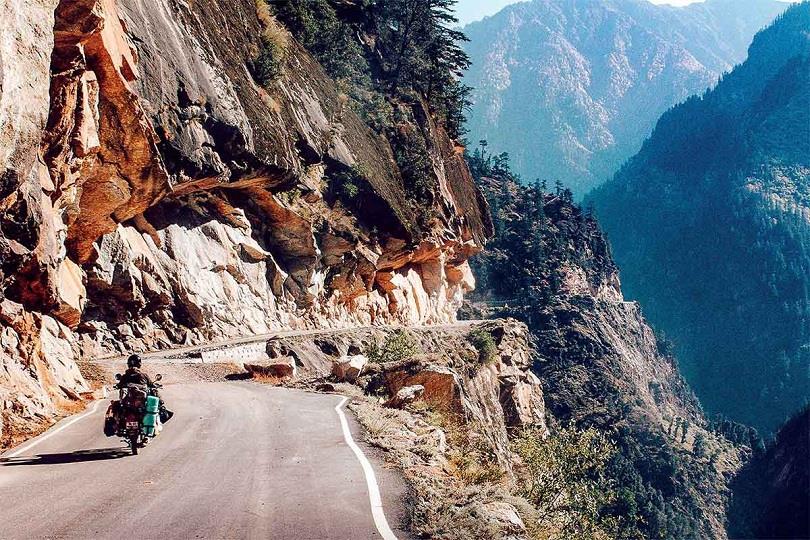(MENAFN- Kashmir Observer) Killer roads of Chenab
Udhampur with 5,918 deaths, Rajori with 4,898 and Ramban with 3,665 are the three districts in the region which have recorded the highest number of deaths in the said period.
Accidents in the six districts of Chenab region makes Jammu and Kashmir one of the worst regions all across India
in terms of death prone accidental areas. According to the National Crime Records Bureau (NCRB) which works under the union home ministry, Jammu and Kashmir topped the list of“high death prone accidental areas” in 2011 in India.
The NCRB survey also revealed that any accident in Jammu and Kashmir has 64 percent chances of being“death prone”, the worst among Indian states on the basis of percentage of fatalities.
Another report of NCRB in 2014 concluded that Jammu and Kashmir with 1.1 accidental deaths per thousand vehicles, was one of the highest accident hotspots in the country. The all India rate of accidental deaths per thousand vehicles was 0.9, the report said.
While traffic authorities and other government officials often blame rash and negligent driving for most deaths across Jammu and Kashmir and Chenab region, activists and locals in Chenab region say that the government is equally responsible for not doing enough for reducing the number of road accidents and casualties despite the fact that these accidents have been occurring for years.
“I have been saying that all of us have to make efforts to at least minimize the number of road accidents and casualties. But, there is a lot the government can do for making sure that the number of accidents gets reduced if not completely stopped,” Butt says adding that a house committee of the state assembly in 2012, headed by Mohammad Yousuf Taragami, had recommended several measures including forming a traffic regulatory authority which would oversee monitoring and regulating of traffic on the roads across Chenab region besides making the violators accountable.
“But, unfortunately, those recommendations were never implemented,” Butt regrets and adds that still a lot can be done if this issue is addressed seriously. For example, he says, installing CCTV cameras, constructing tunnels at sharp curves, keeping critical care ambulances available in the Chenab region. According to him, the administration has to be pressured to do something urgently about the recurring accidents besides spreading awareness among drivers to take care of their lives and those traveling with them. Butt observes that training the drivers for driving in hilly terrains is something the government should consider urgently“in the manner it is being done in Himachal Pradesh and some other hilly regions.”
Meanwhile, the Jammu and Kashmir High Court, in response to public interest litigations and a letter written to the chief justice of High Court in December last year by Butt for taking suo moto notice of the recurring fatal road accidents in Chenab region, had asked the state government on February 20 this year to constitute a committee to look at the causes of the road accidents in Chenab region and give recommendations for stopping or minimizing the accidents.
Accordingly, government had constituted a committee in compliance with the directions of the High Court for ascertaining the reasons for an increase in cases of road accidents in the hilly Chenab Valley and suggesting measures for stopping the accidents.
The court had specifically mentioned the PIL No. 30/2019 C/W PIL No. 01/2018 WP(C) PIL No. 13/2022 titled Intakhab Ahmed Qazi V/s Union territory of J&K.
Headed by the Engineer in Chief (Secretary of Technical, the other members include the Public Works (R&B) Department, Secretary, Road Safety Council, Executive Director (P) NHIDCL, Jammu Office, Superintending Engineer PW(R&B) Circle Doda and Senior Superintendent of Police, (Traffic) Rural.
Kashmir Observer contacted one of the members of the committee,
Superintending Engineer PW(R&B) Circle Doda, Rampal Gupta, who said that the report prepared by the committee is ready.
Quoting from the report, he said:
“The accidents are not limited to road alignment only but also have broader correlation with driver's state of mind, fatigue, condition of vehicle and weather conditions.”
The experts in the committee have suggested strict enforcement of speed limit by installing CCTVs cameras and speed trackers at the specified spots along the roads in Chenab region besides taking measures such as conducting breathing tests for drunken driving at different spots along the roads.
Strict action should be taken against the violators of traffic rules including registering FIRs against them, the committee has recommended and has urged the administration to strongly act against the use of expired vehicles in the extremely difficult roads in Chenab region.
Other recommendations include: checking the overtaking of vehicles by erecting dividers at vulnerable spots, fixation of automatic speed control devices in passenger vehicles and training sessions for drivers besides awareness campaigns using traditional and social media.
“Over-speeding is the main cause of traffic accidents in the Chenab valley. And most of the drivers use mobile phones while driving which divides their attention and often results in accidents,” Gupta told Kashmir Observer.
Other reasons, he said, include untrained drivers and some drivers mixing driving with drinking.“Otherwise, the roads are not bad for driving. We found the roads OK,” Gupta told Kashmir Observer.
But local residents say that the fatality of roads has been“ignored” for quite some time now.“Only a very bad accident involving the death of dozens attracts attention of the authorities,” says a resident of Doda, Imtiyaz, while preferring sharing his first name only.
“The response remains limited to statements and condolence messages, and then everything settles in and the vehicles go on killing people as usual,” he opines.
follow this link to join our whatsapp group : join now























Comments
No comment